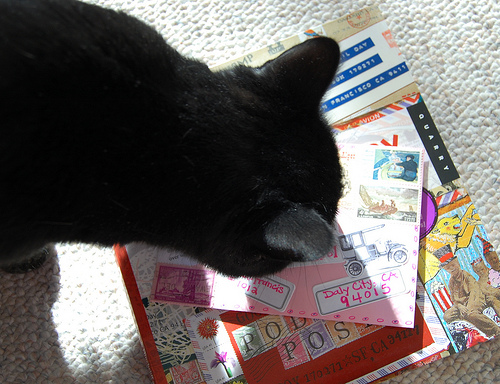5 Reasons to Consider Using an Omniscient Narrator
Today’s guest post is by Brenda Berg.
Take any writing class, and talk to any editor, and he’ll say “never write with an omniscient narrator.” I’ve never heard a good reason for that, though, and that’s why I decided to get a writing consultation with Paper Fellows. We worked on the issue, and here’s what I learned.
What is an omniscient narrator?
An omniscient narrator is one that is literally all-knowing. He (or she) knows everything that is happening in your story at any time, and that includes any information that your characters may not be aware of. He also has a good understanding of the history of your story’s world.
Why are writers told not to use the omniscient narrator? Because editors know just how easy it is to make mistakes with it. After all, you’re not all-knowing yourself, so how can your narrator be? It’s actually easier than you think if you take care when you’re writing and use tools such as Cite It In to get the facts correct. Here’s why an all-knowing narrator is so useful and how you can use one.
- Readers get to know multiple characters
A story is often much bigger than just the one character. Multiple characters will be making an impact on the story, making changes that affect others who may not even know them. This can be seen in the Game of Thrones books (though these books are not written with omniscient POV; they’re third-person shifting POV), in which chapters jump between different characters and show what they’re all doing.
Having an omniscient narrator means you can easily switch between characters. You can still have one you’ll focus on, but you’re not limited by what that one character can see or do at any one time.
- Your narration is more flexible
An omniscient narrator isn’t limited to what the main character knows. She’s literally all-knowing. That means that you have much more flexibility when it comes to telling your story. You can tell readers anything they need to know to progress the story, even if the character doesn’t know about it yet.
You can also use the narrator to set the story’s tone. For example, a more learned, historical tone will lend the story the air of history being retold. Alternatively, you can have a narrator that’s more wry, making the story more satirical, if you’d like.
- It can add dramatic irony
There’s little drama if you can’t see the traps your character is going to walk into. You have to be cautious with using your narrator to add dramatic irony, though. Tell readers everything, and they’re not going to feel the tension. However, when used sparingly, sharing information the character doesn’t know means that you can create drama for the reader.
- You can move between scenes quickly
If you’re using a limited third-person POV, it can be slower to move between your scenes. You either have to have characters explain what’s going on, which risks telling rather than showing, or clumsily jump between characters, which can get messy.
If you’re writing a story that relies on the action moving quickly, then an omniscient narrator can help you do that. Because she knows everything that’s happening, she’ll be able to move on to the next part of the story with no awkward crunching of gears.
- It’s helps when writing epic stories
If your story is shaping up to be an epic adventure, then you’ll need an omniscient narrator. You’ll want to be showing what’s going on in distant lands, different areas of the map. With a limited third-person perspective, that can almost be impossible.
There’s a reason this kind of narration is so popular in sci-fi and fantasy stories. These genres, by their very nature, often demand a lot of world building. This can be done within the confines of first-person narration, but it can be much more difficult to do so. An all-knowing narrator can instead almost “fly around the world,” showing the reader what this world is like.
Think of the Lord of The Rings series. This is a good example of an omniscient narrator used well, to show what’s happening in different places at the same time.
Writing Practice
Now that you know how the omniscient narrator can be used, it’s time to give it a try for yourself.
Write a scene in which one character has to share information with another character. She could be declaring undying love, revealing the location of the treasure, or sharing a terrible secret with her friend.
Write this scene with an omniscient narrator, and use the opportunity to share information with the reader that the characters do not know. Maybe the treasure was already stolen by a third party, or maybe someone else already knows the terrible secret. It’s up to you.
And there you have it. Try using the omniscient narrator for yourself. You might get a lot more out of your story this way.
 Brenda Berg is a professional with over fifteen years of experience in business management, marketing and entrepreneurship. She is a consultant and tutor for college students and entrepreneurs. Connect with Brenda on LinkedIn.
Brenda Berg is a professional with over fifteen years of experience in business management, marketing and entrepreneurship. She is a consultant and tutor for college students and entrepreneurs. Connect with Brenda on LinkedIn.












Perhaps we should also have 5 reasons NOT to use an omniscient narrator?There are definite drawbacks!
1. Distance! You are in the narrator’s pov, NOT a characters, which means everything is filtered.
2. Telling. Again, you’re in the narrator’s pov. That means the narrator has to TELL us the characters’ experience, rather than have us be immersed in it. An immersive experience is a break in POV.
3. Still can’t head hop. The narrator can tell us what different characters are thinking and feeling, but we can’t get the direct thoughts. That requires dropping into the character’s pov.
4. Telling too much. When you know everything, it’s easy to tell far too much. I see it over and over and over. Because the narrator knows what and why each character is doing what they’re doing, they tell the reader and destroy tension and conflict.
5. Makes it THAT much harder to get traditionally published. Readers like being immersed in the character’s experience. That’s why agents and publishers are choosing Third Limited over Third Omniscient today (and for the past 25 years). You have to write DAMN GOOD Omniscient to overcome that bias.
I wholly agree. I believe writing in this POV is very hard. There are some great authors out there who can pull it off, but I don’t recommend beginning writers trying it. It can be fun to play around with, and maybe in shorter fiction works, like short stories, it can be a great choice. I’ve written a bit about this voice and have also discouraged it, but I felt it would be a good idea to present another viewpoint on the topic.
The primary reason NOT to write omniscient is that readers no longer like it. Readers today prefer the immediacy of third or first person viewpoint because they want to feel what the character feels, see what he sees, etc. Omniscient is more cold, and closer to a camera watching the action.
If all a reader wants is a camera, he will watch a movie, not read a book that mentally immerses him in the emotion and visceral elements.
The only time omniscient works in fiction is in an epic like LORD OF THE RINGS with its narrative of a great story retold or a novel mimicking the style of an author like Jane Austin.
I have seen in YA novels that they list the person who is talking at the beginning of the chapter. Is this a good way to have different points of view? It is sometimes told in first person (I) or in third person.
Using an the omniscient narrator can be very tricky. When writing it is hard not to get involved with your characters. It would take a great deal of restraint on the writer’s part. I can see where it would be extremely helpful in fictions worlds to have an omniscient narrator to guide you through but also I think like Marilynn the reader likes seeing the world through a character’s eyes, especially if they have connected with that character.